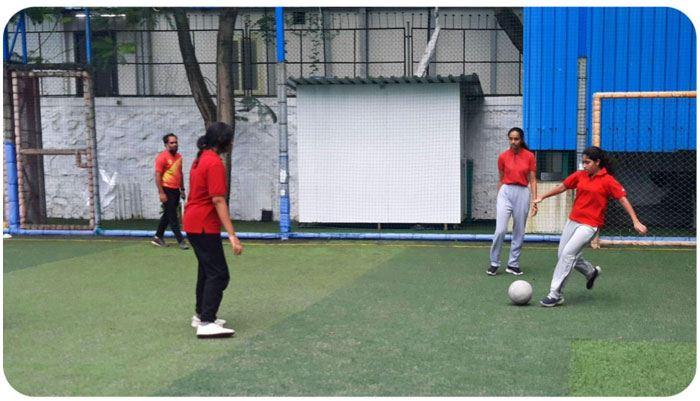This article is contributed by Dr. Mrs. Vandana Lulla, Principal, Podar International School, IB, and Cambridge International

Introduction
T.S. Eliot once said, “Only those who will risk going too far can possibly find out how far one can go.” Podar International School is currently celebrating the IB learner profile of being a risk-taker. Our morning assemblies and daily inquiries are tinged with the question, “What does it mean to be a risk-taker or who is a risk-taker?’
Who is a risk-taker?
A risk taker is unafraid to act outside their comfort zone. Why does IB encourage children to be risk takers? A risk-taker is resilient in facing challenges and learns new skills quickly. Risk-takers are creative thinkers, bold communicators, and open and flexible.
Such learners have nothing to prove, nothing to lose, and nothing to hide. They have positive self-worth and are secure and confident individuals. Risk-taking is a skill that all learners need to learn to be successful not only in academics but to succeed in life.
Many ask if there is a difference between being a risk taker and being rash. Yes! When one is being rash, all caution is disregarded, and their action is taken in a hurry. Such actions can bring physical, emotional, and financial ruin. In contrast, risk-takers successfully narrow their options by doing their homework and having a plan to achieve their goal.

What does it mean to take risks in class?
It is interesting to note that even riding a bicycle is the mark of a risk-taker. The risk of learning how to cycle is that one can fall and crash. The reward here is speed and learning to be mobile and independent. When children learn to try new things, take on challenges, and stand for the things they believe in, they become confident individuals who live life to the fullest.
Risk-taking may mean so many things for children. Here are some examples of students taking a risk in class:
- Raising their hand first to answer a question in class
- Trying to do something new even if it is unfamiliar – such as doing origami or creating art
- Standing up for oneself in front of others
- Volunteering to do a play or take part in an extracurricular activity
- Attempting gymnastics or any sports along with an instructor

What can you do to promote risk-taking behavior in children?
When students display their risk-taking actions in school we praise their efforts by adding the word ‘risk-taker’ to our words of encouragement. It helps learners to associate their behavior with a quality that they displayed.
Similarly, children help parents at home with many tasks they do not like to do (for example, playing a board game they’ve never played or helping with cooking). The best way to encourage kids to try new activities is to make them feel safe and at ease doing so. Children often derive strength from the presence of parents, teachers, or friends when placed in an unfamiliar environment and tasked to take unfamiliar actions. What does it mean to be a risk-taker at home?
The following actions demonstrate what it might be to be a risk-taker at home:
- Trying out a new slide or a game
- Petting a neighbor’s dog
- Trying new cuisines
- Learning how to cook

Risk takers become resourceful because they want to solve a problem. They will do their research or talk to others before forming their own opinions and taking action. Children require direction when they are younger, but they become more self-assured and can take risks as they become older.
Some questions to think about
Here are a few questions that can be used to help children and parents think about being a risk-taker and taking risks:
- What does it mean to you to take risks?
- What can people do to encourage you (or someone else) to take risks?
- Do you like to take risks? How do you behave? How do you feel?
To see children successfully living in the world, Podar International School encourages children to be risk-takers from early childhood. All Podarites are familiar with the IB profiles and are awarded certificates to encourage behaviors they display according to the specific learner profile.
